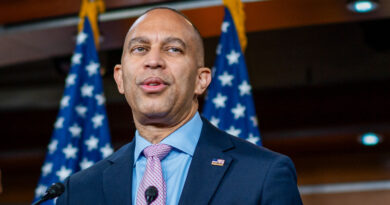Decline in US Manufacturing Continues with Further Job Cuts and Decrease in New Orders
America’s factory activity contracted in October as orders and production dropped, leading to more headcount reductions.
The U.S. manufacturing sector shrank further in October, with declining new orders and production resulting in increased job cuts, according to reports released on Nov. 1 by the Institute for Supply Management (ISM) and S&P Global. These reports highlight the deepening challenges faced by American factories amidst economic concerns central to the 2024 presidential race.
“Demand remains subdued, as companies continue to show an unwillingness to invest in capital and inventory due to concerns (for example, inflation resurgence) about federal monetary policy direction in light of the fiscal policies proposed by both major parties,” said Timothy Fiore, chair of ISM’s manufacturing business committee.
“Uncertainty makes owners hesitant to invest in capital spending and inventory, especially as inflation and financing costs continue to put pressure on their bottom lines,” said NFIB chief economist Bill Dunkelberg.
“Orders for investment goods such as plant and machinery have fallen especially sharply in recent months,” said Chris Williamson, chief business economist at S&P Global Market Intelligence. “Headcounts have also been cut for a third straight month, underscoring the reluctance among firms to expand in the face of heightened geopolitical uncertainty, with firms citing tensions around the US election as well as intensifying international conflicts.”
The ADP report, which provides a snapshot of the private sector labor market based on the payroll data of some 25 million U.S. employees, showed 7,000 manufacturing jobs disappearing last month. The Bureau’s non-farm payrolls data, meanwhile, showed 46,000 manufacturing jobs eliminated.
The ongoing slump in U.S. manufacturing has become a key issue on the presidential campaign trail, with both former President Donald Trump and Vice President Kamala Harris proposing plans to revitalize the sector.
Despite areas of weakness like manufacturing, the U.S. labor market has remained relatively stable in the face of high interest rates driven by the Fed in response to soaring inflation. However, with unemployment at 4.1 percent, there are indications of a slowdown in job market momentum.





